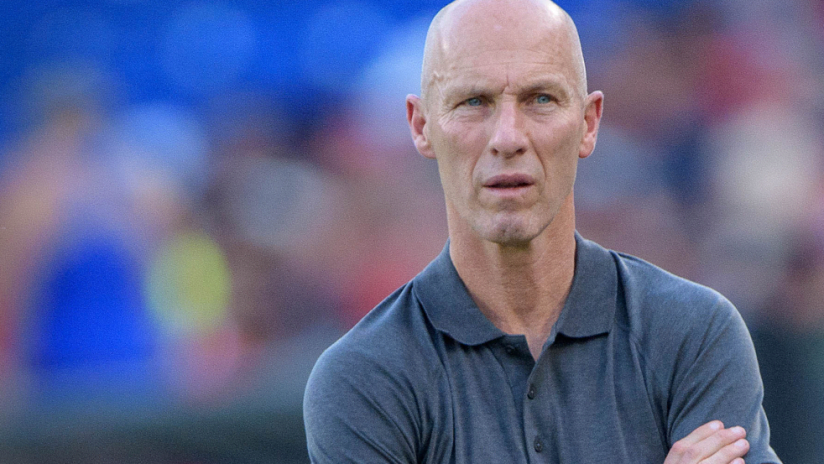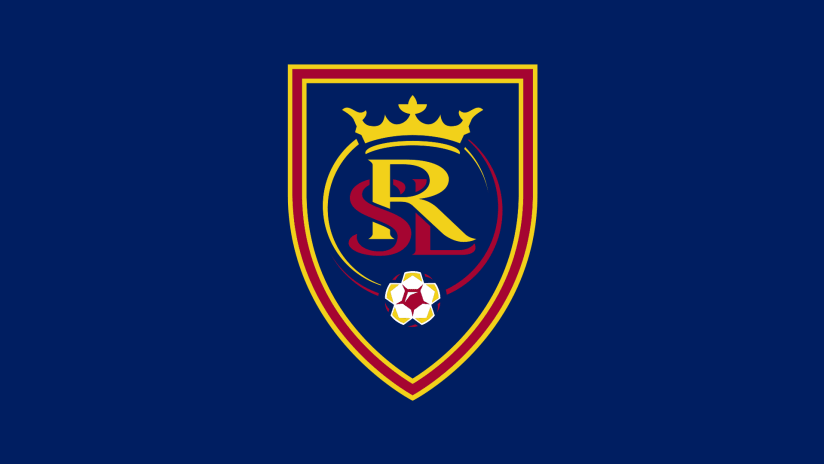From the moment they were announced as an expansion team in the fall of 2014, long before they unveiled their stylish logo, broke ground on Banc of California Stadium or began assembling their inaugural roster, LAFC made a promise to be different.
Even when they weren’t saying it aloud, the club, with their celebrity owners, deep pockets and romantic notion of transcending soccer to become a true representative of their city, have always given off an aspirational air. They want to be more than the typical MLS team. They want to be bigger and better, both on and off the field. They want to be unique.
They’re tied for second in the West heading into Friday’s Heineken Rivalry Week matchup at the LA Galaxy (10:30 pm ET | ESPN - full TV & streaming info), but it’s still too early to know whether the expansion club will achieve those lofty goals. We do, however, already know that head coach Bob Bradley has built a style of play with LAFC that’s distinct within MLS, particularly in the midfield.
LAFC’s current three-man midfield of Eduard Atuesta, Benny Feilhaber and Lee Nguyen is more fluid, interchanges more often and is better on the ball than almost all their peers around the league. Atuesta is the most defensive-minded of the group, but any one of the trio is liable to pop up in any place at any time. When they’re flowing, they’re the engine behind LAFC’s best moments, breaking down opponents with quick ball movement, incisive passing and dangerous runs and keeping teams penned in with high defensive pressure.
Their roles aren’t as rigid as most central midfielders in MLS, most of whom can be broadly categorized as holders or attackers. That fluidity forces them to develop a deep understanding to be effective. That’s a challenge, but it allows LAFC to play out of the back in different ways, causes confusion in opposing midfields and regularly puts star attackers Carlos Vela and Diego Rossi on the ball in dangerous one-on-one situations. In short, it goes a long way toward making LAFC who they are.
“I think that the understanding of those three and the way that they can make small exchanges so that there’s options to play the ball becomes important if you want to try to play from the back, if you want to try to play from one side to the other, play from outside in and all these kind of things,” Bradley told MLSsoccer.com on Wednesday. “The understanding of how players move in conjunction with each other, I think you see that in any good midfield combination. So, we work on those ideas. It’s been part of the work that I’ve tried to do with many of the teams that I’ve coached.”
Understanding each other’s movement is perhaps the most critical part of Atuesta, Feilhaber and Nguyen’s jobs. Every successful midfield needs its players to be in tune with each other. That’s even more true in setups with as much fluidity as LAFC’s. Atuesta, nominally the most defensive of the trio, has the freedom and ability to move into the attack effectively, but Feilhaber and Nguyen must balance his forays forward with defensive cover. Conversely, both Feilhaber and Nguyen have license to drop deep to pick up the ball, but the midfield must remain conscious of its connection with LAFC’s front three and avoid leaving them on an island.
“I think the way Bob has it set up, it’s in certain moments when teams may be trying to man-mark us around the pitch, we have the ability to kind of just move around switch sides and then just interchange,” said Nguyen. “Like normally, a defensive midfielder will stay with the attacking midfielder and usually you don’t see an attacking mid go all the way back to the ball. But in our movement, if I wanted to come back and have Eduard move over and Benny take a different spot, it just creates a lot more chaos [for the other team] to try to figure out.
“For me, I love it because it’s like you have a little bit more freedom in the midfield to move, but there’s a sense to the movement. It might look like we can go anywhere we want, but there’s a real rhythm and a sense of how we do it.”
On paper, it sounds relatively simple. In practice, it’s a bit more complex. especially considering starting Nguyen and Feilhaber together leaves LAFC a bit light defensively. Prior to arriving at LAFC, both players, particularly Nguyen, spent most of their careers as attackers. Feilhaber transitioned into more of a deeper role in his final years with Sporting Kansas City, but Nguyen lined up as a withdrawn forward or an all-out attacking midfielder throughout his six seasons with the New England Revolution. Bradley is now asking both to play a bit deeper, defend a lot more and think of themselves more as a player within a high-functioning unit than as a gifted individual shouldering a big attacking burden.
The season-ending injury suffered by regular starter Mark Anthony-Kaye earlier this summer further complicated things, but LAFC, who are still integrating Designated Player midfielder Andre Horta, have coped well since he went down. That’s not to say they can’t improve.
Bradley pointed to the first goal they conceded in a 2-0 home loss to SKC on Aug. 11 as an example of a play where midfield positioning hurt LAFC. Feilhaber dropped deep on the right side to initiate an attack, but he was slow to shift centrally after LAFC rotated the ball to the left. With Feilhaber occupying the right side of the defense, right back Tristan Blackmon remained higher up the field. Rossi eventually turned the ball over on the left sideline and Nguyen slipped while attempting a tackle, opening a lane for SKC’s Diego Rubio to dribble into the middle. Feilhaber then slid to the middle to help mark, creating space for Gerso Fernandes to run into on the right. Blackmon, starting from an advanced position, couldn’t catch up to the SKC speedster, who collected Rubio’s pass and buried his shot.
“The first reactions were good,” said Bradley. “Lee moved inside, he was dealing with Felipe Gutierrez, and Lee is in good position and then instead of just controlling, he ended up going a little too tight and ended up falling down. And then Rubio cut inside, and because Benny had been slow to move inside, we get caught losing a ball where we hadn’t reorganized ourselves in a good way…. I don’t see that as being just a complete product of midfield roles, I think that was a situation where, as we started to play, we thought that we were in control and then when we lost it we paid the price.”
That’s part of the give-and-take of soccer, however. With so much technical ability in the midfield, LAFC will naturally sacrifice a certain amount of defensive rigidity. Bradley is just fine with that, especially since he knows his trio (whether it remains Nguyen, Feilhaber and Atuesta or if Horta claims a larger role) should form a deeper understanding with more time.
And that deeper understanding? That should only lead to improved results.
“There are teams, there are midfields where you clearly have a sense as they start to play of what their ideas are where guys go, and I think that happens in the best midfields,” he said. “In the best days of Barcelona, there was such an understanding between [Sergio] Busquets and Xavi and Iniesta. In more recent days, even in a team like Real Madrid, yeah, Casemiro’s job is to be deep, but now in certain moments where is [Luka] Modric, they use [Toni] Kroos so often to drop into the half space on the left with Marcelo going forward, with [Dani] Carvajal going forward. So, trying to find a way that your midfield group is in sync and how that fits with our overall ideas on how you want to go forward, I think that’s for me an important part of how any team plays.”













